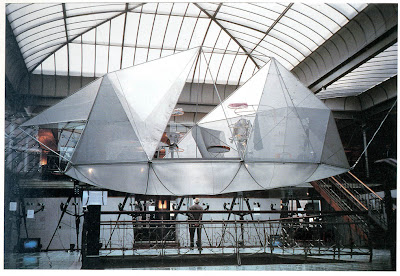I'm going to float a
hypothesis… I'm probably not the first one to think of it either, but I am
interested in following this strain: The superficial "look" of architecture—architecture as image—only reflects the material biases of a designer. The
underlying attitudes toward program and habitation reach a more fundamental comprehension
of the designer's ethos. And that these attributes are essential to the architecture whereas the image is less so. Straightforward enough, right?
To use a loose
metaphor: One's first impression of a person may be influenced by outward
appearance, but even an unsatisfactory outward appearance can be overcome by that
person's personality, and often that personality is not immediately perceived. A person who has an unsavory personality can dress impeccably but that will do little to make them friends.
So, even when using a
similar approach or stylistic convention (parametric modeling, blobs), two
architects may have very different attitudes regarding who the design is
intended for, how the user occupies the space, how the design exists in a
greater context, etc. I would include an example here, but the relationship
seems to generally move in the opposite direction, highlighting only variations in image…
Ok. Without being too
critical, as I have yet to do my homework, does this hypothetical work in
practice? Are there architects who challenge the way a building or program operates and responds to society in an essential way or are we just dealing with decorated sheds here? And I'm not talking about the
'challenging preconceived notions' hyperbole architects use to exaggerate the
power of superficial treatments.
I may be revealing
my own bias that architecture is strongest when questioning the
way things are (not just the way they look) and reimagining how they ought
to be. After all, if designers only sought to make prettier phones, we wouldn’t
have smartphones. Off to test my hypothesis!











